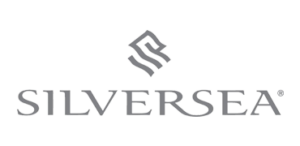Papeete (Tahiti) to Valparaiso
- 12 Oct ‘26
- 23 nights
- Departing from Papeete
- Silver Cloud
-
Inside price fromCall for price
-
Outside price fromCall for price
-
Balcony price fromCall for price
-
Suite price from$24,600*/pp
YOUR ITINERARY
Papeete, Tahiti, French Polynesia - Fakarava, Tuamotu Islands - Atuona, Hiva Oa, Marguesas Island - Tahuata, Marquesas Islands - Hatiheu, Nuku Hiva - Hanavave, Fatu Hiva - Mangareva, Gambier Islands - Adamstown, Pitcairn Islands - Adamstown, Pitcairn Islands - Easter Island, Chile - Easter Island, Chile - Alexander Selkirk Island, Chile - Robinson Crusoe Island - Valparaiso, Chile












Formed by two ancient volcanoes and joined at the ist...
Fakarava is oblong shaped and has an almost continuous s...
The largest of the southern islands, Hiva Oa, the ma...
In the Gambier Islands of French Polynesia, Mangareva is the lar...
Home to the original mutineers of the Bounty, Adamstown̵...
Home to the original mutineers of the Bounty, Adams...
Easter Island, the easternmost settled island of Polynesia...
Easter Island, the easternmost settled island of ...
Think of Daniel Defoe’s classic novel Robinson Crus...
The friendly English-speaking population offers a uni...
Since time immemorial Valparaiso has inspired writers, poets, ...
YOUR SHIP - The Silver Cloud
After extensive refurbishment, Silver Cloud is the most spacious and comfortable ice class vessel in expedition cruising. Her large suites, her destination itineraries and her unparalleled service make her truly special. Her four dining options will tantalise your taste buds and as 80% of her suites include a veranda, watching a breaching whale or a few cavorting penguins has never been so personal. A limited number of guests in polar waters, mean that Silver Cloud has the highest space to guest and crew to guest ratios in expedition cruising. With her 18 zodiacs, 10 kayaks, possibilities are almost limitless with ship-wide simultaneous explorations.
Description
After extensive refurbishment, Silver Cloud is the most spacious and comfortable ice class vessel in expedition cruising. Her large suites, her destination itineraries and her unparalleled service make her truly special. Her four dining options will tantalise your taste buds and as 80% of her suites include a veranda, watching a breaching whale or a few cavorting penguins has never been so personal. A limited number of guests in polar waters, mean that Silver Cloud has the highest space to guest and crew to guest ratios in expedition cruising. With her 18 zodiacs, 10 kayaks, possibilities are almost limitless with ship-wide simultaneous explorations.


